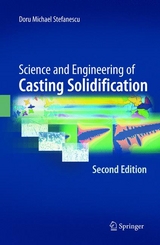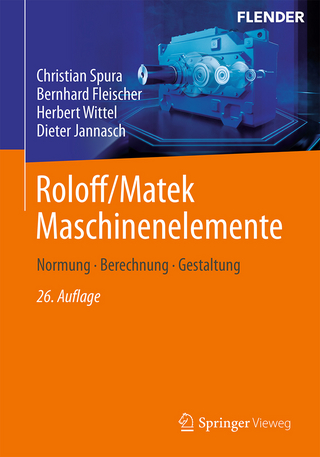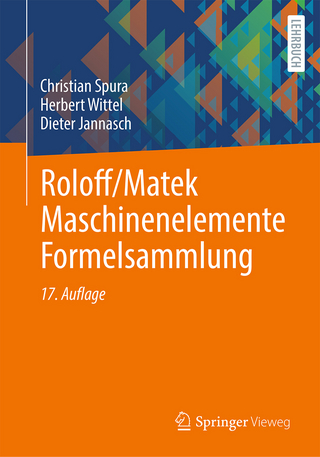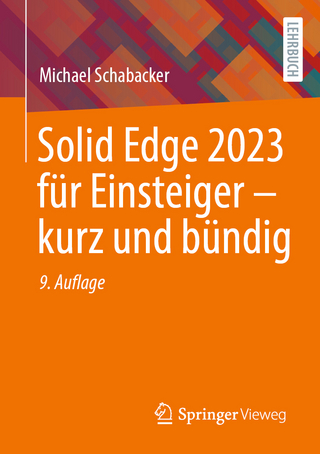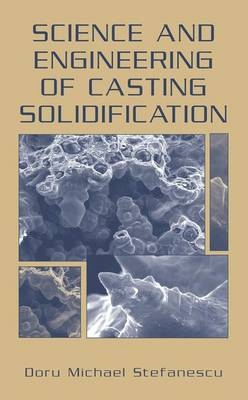
Science and Engineering of Casting Solidification
Seiten
2002
Kluwer Academic Publishers (Verlag)
978-0-306-46750-9 (ISBN)
Kluwer Academic Publishers (Verlag)
978-0-306-46750-9 (ISBN)
- Titel erscheint in neuer Auflage
- Artikel merken
Zu diesem Artikel existiert eine Nachauflage
This text represents an attempt to describe solidification theory through the complex mathematical apparatus that includes partial differential equations and numerical analysis, which are required for a fundamental treatment of the problem.
Many of the processes used in a metal casting are empirical in nature, but many others are deeply rooted in mathematics. In whatever form, casting of metals is an activity fundamental in the very existence of our world, as we know it today. Foundry reports indicate that solidification modelling is not only a cost-effective investment but also a major technical asset. It helps foundries move into markets with more complex and technically demanding work. However, to the best of the author's knowledge, there have been no attempts to synthesize the information that can be used for engineering calculations pertinent to computational modelling of casting solidification. This book attempts to describe solidification theory through the complex mathematical apparatus that includes partial differential equations and numerical analysis, which are required for a fundamental treatment of the problem. The mathematics, however, is restricted to the element essential to attain a working knowledge of the field. This is in line with the main goal of the book, which is to educate the reader in the fast moving area of computational modelling of solidification of casting.
Many of the processes used in a metal casting are empirical in nature, but many others are deeply rooted in mathematics. In whatever form, casting of metals is an activity fundamental in the very existence of our world, as we know it today. Foundry reports indicate that solidification modelling is not only a cost-effective investment but also a major technical asset. It helps foundries move into markets with more complex and technically demanding work. However, to the best of the author's knowledge, there have been no attempts to synthesize the information that can be used for engineering calculations pertinent to computational modelling of casting solidification. This book attempts to describe solidification theory through the complex mathematical apparatus that includes partial differential equations and numerical analysis, which are required for a fundamental treatment of the problem. The mathematics, however, is restricted to the element essential to attain a working knowledge of the field. This is in line with the main goal of the book, which is to educate the reader in the fast moving area of computational modelling of solidification of casting.
Length-scale in solidification analysis; Thermodynamics of solidification; Macro-scale phenomena - formation of macrostructure; Macro-mass transport; Macro-Energy Transport; Macro-modelling of solidification; Numerical approximation methods; Micro-scale phenomena and interface dynamics; Cellular and dendritic growth; Eutectic solidification; Peritectic and monotectic solidification; Solidification in the presence of a third phase; Atomic scale phenomena - nucleation and growth; Stochastic modelling of solidification; Macro-micro modeling of solidification of some commercial alloys.
| Erscheint lt. Verlag | 30.6.2002 |
|---|---|
| Zusatzinfo | index |
| Verlagsort | Dordrecht |
| Sprache | englisch |
| Themenwelt | Technik ► Maschinenbau |
| ISBN-10 | 0-306-46750-X / 030646750X |
| ISBN-13 | 978-0-306-46750-9 / 9780306467509 |
| Zustand | Neuware |
| Informationen gemäß Produktsicherheitsverordnung (GPSR) | |
| Haben Sie eine Frage zum Produkt? |
Mehr entdecken
aus dem Bereich
aus dem Bereich
Normung, Berechnung, Gestaltung
Buch | Softcover (2023)
Springer Vieweg (Verlag)
39,99 €
Buch | Softcover (2023)
Springer Vieweg (Verlag)
24,99 €
Buch | Softcover (2023)
Springer Vieweg (Verlag)
24,99 €
